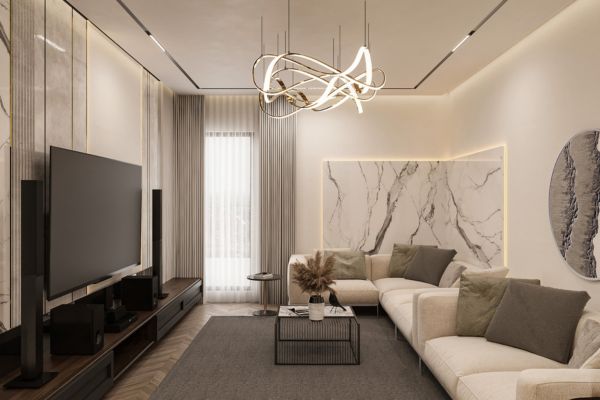Potential candidates of interior design naturally would like to know what subjects are studied on an interior design course so that they can decide if they want to take the next step into a new career.
There is a wide variety of subjects that can be taken on these types of courses, some of which are not necessary for someone who quickly wants to start work as an interior designer.
If you were to ask a group of interior designers what they considered to be the best sessions to take to become familiar with the processes of interior design, you could compile a list of common choices as there would likely be agreement on those which are the most useful.
Everybody has a different set of personality attributes and because interior design students are changing their careers from a diverse range of work backgrounds, there are different subject types and different approaches to get the necessary information to them. There is always more than one way to learn something, for example, interior design can be taught by demonstration (learning by doing) or from reading up on the subject and applying, for example, what has been done before to what makes sense to you. In addition, some people are organised, some are very creative and courses will hopefully train individuals to have both of those traits or meet in the middle.
There are a number of courses that many have deemed as fundamental to their careers in interior design and I will list them here:
1. Interior Design
The main subject itself, is obviously necessary. Organisations might have different names for this topic, for example, the ‘business of interior design’. Interior designers actually work on projects, earning fees by contracting with clients to design a room or rooms in their homes. Any good course will therefore explain to the student what is involved in the process of acquiring the project, doing the client presentation, showing how to choose the correct fabrics and discussing anything a design student would need to know while working on a project such as time management, presentation etc.
2. Soft Furnishings
The subject could also called be F, F & E (Furniture, Fittings and Equipment) and shows how to correctly dress a given room with all of the items that are going into it. For example, if you imagine the permutations available when giving an interior designer an empty room to fill, they would need to choose the correct sofas, tables, cabinets etc to fill that space. Some of these items can be bought from retail channels but a good course will deal with the natural exceptions to the rule. Given that the designer is going to fulfil the client brief, that brief could change over time or the client might want to have something made especially for them. This course would also deal with contemporary styles, current colour trends and would need to make sure that students understand every stage of completing the brief.
3. Auto cad
This is the go to software for dealing with 2 dimensional and 3 dimensional projects and because of its wide usage; all students of interior design need to learn how to use it at some level. There are courses on this software ranging from beginners to advanced but normally a student ingrained in the basics can then find their way around its more advanced features. A good course will also deal with exporting .dwg files so that they can be imported into additional software later. Thus ensuring a much wider range of uses so that once the hard work of creating the drawings in the cad software is done, the student can produce exceptional 3 dimensional images to show off their project.
4. Technical Drawing
This subject is covered by most of the best schools at some level. The course involves students taking out a pencil and using a drawing board which can be a shock to those who have never been creative at school. This subject also gives candidates an idea of the rigours of drawing but those individuals should not be too concerned because once the processes are understood, later when working as a designer, the work can be delegated to somebody else who prefers the technical aspects. The 3 point perspective of a room drawing is a standard exercise and once undertaken the student will really have a clearer idea of what an interior design project involves. Understanding a technical drawing means that the student has a full grasp of all of the measurements relating to the room they are working on and they can now relate this information either to the client or a potential supplier of produce to them.
5. Photoshop (Visual Packages)
Adobe Photoshop and drawing packages like this help the student learn how to become creative while also becoming familiar with computers. It is vital that potential interior designers acquire the tools to get together ideas and inspiration for when they are working on projects in the future. Often the client will only see the end result of the work done by the designer but in order to take on a project, the student designer needs to be able to produce presentations for the client and these will be undertaken in a package like Photoshop. Students can learn how to scan in drawings or photographs they have taken into layers. This will allow them to be creative and produce different versions of the scanned items, eg changing colours of carpets, flooring, introducing new textures and combining other digitally content created elsewhere so that a design sketch image can be produced showing the theme of the project the designer intends to work on.


